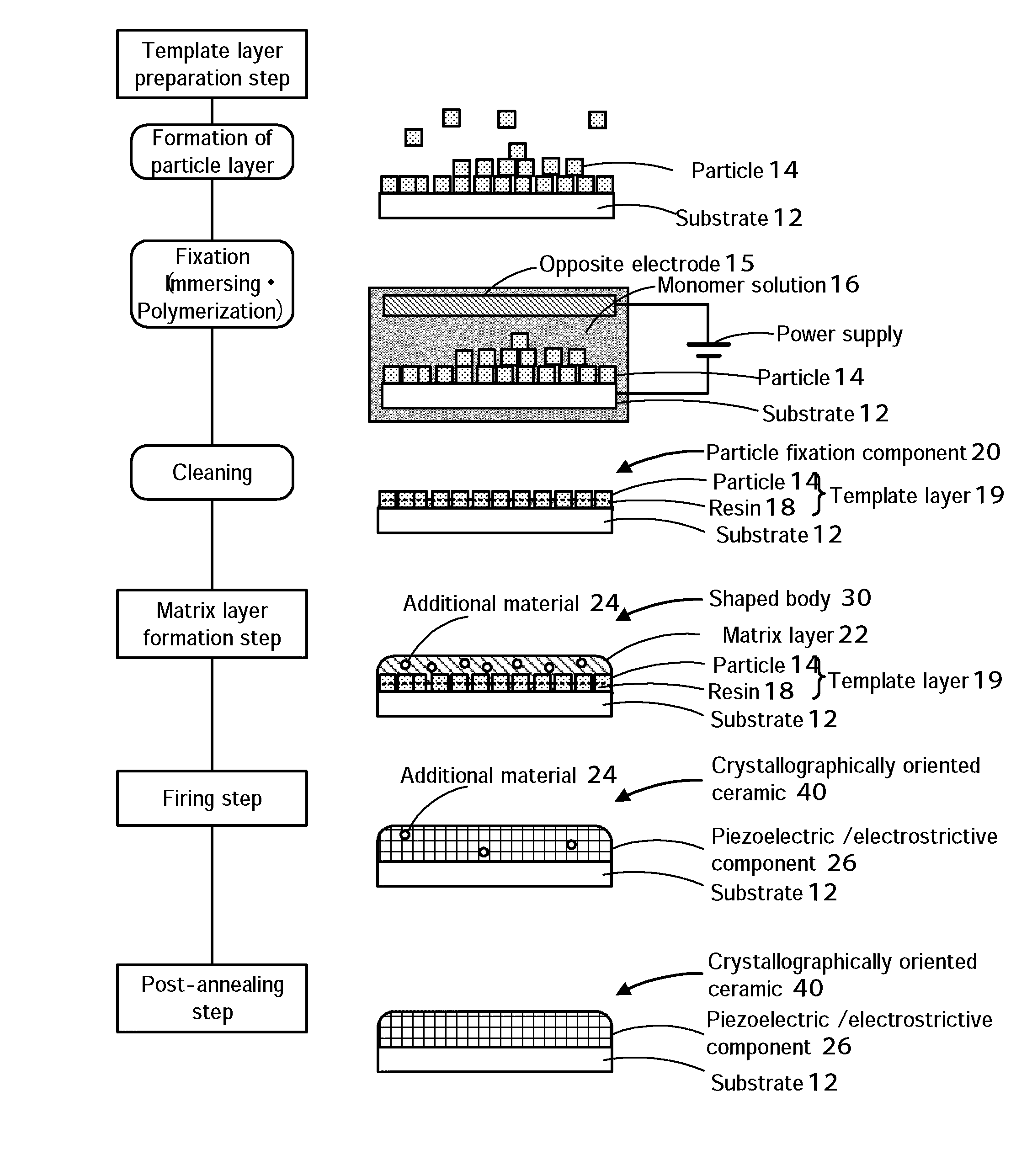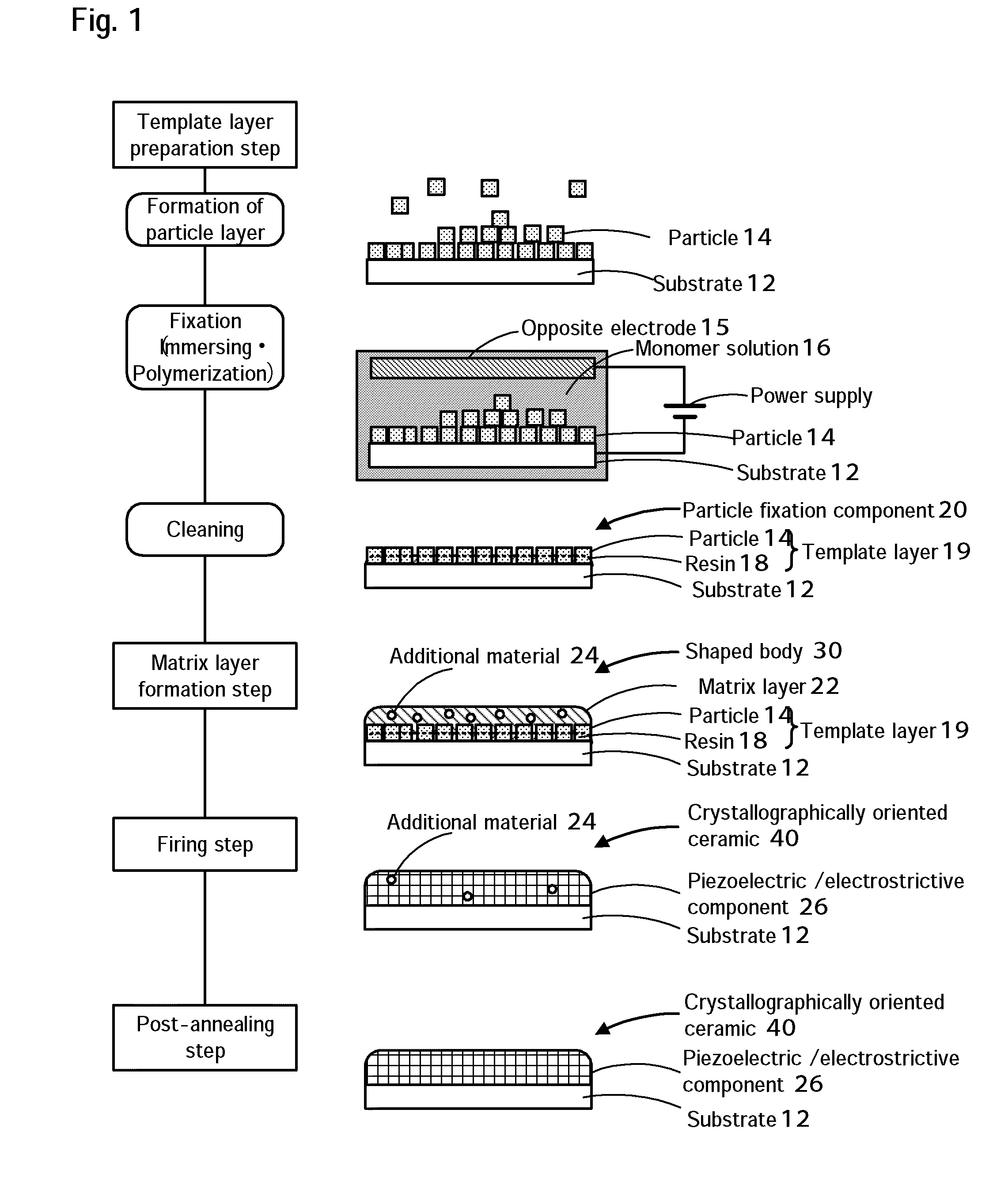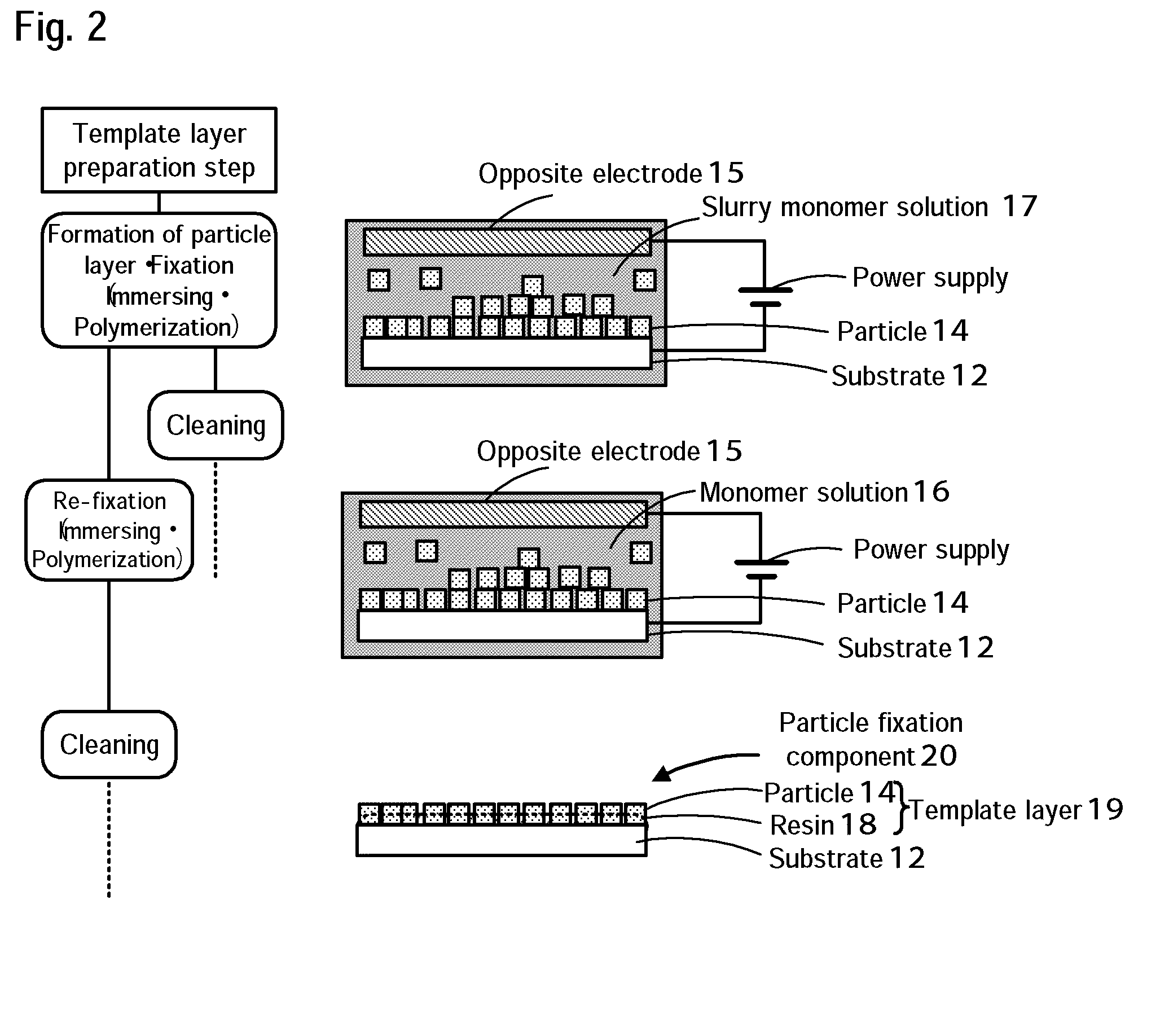Method for producing crystallographically oriented ceramic
a crystallographic orientation and ceramic technology, applied in the direction of crystal growth process, polycrystalline material growth, coating, etc., can solve the problems of difficult to produce thick films, low productivity, and difficult to orient piezoelectric thin films seed crystals in the 100 degree range, so as to increase the degree of orientation of lead-containing materials. , the effect of easy orientation
- Summary
- Abstract
- Description
- Claims
- Application Information
AI Technical Summary
Benefits of technology
Problems solved by technology
Method used
Image
Examples
example 1
Template Layer Preparation Step
[0045]A platinum substrate having a size of 10 mm×10 mm and a thickness of 0.5 mm was used as a substrate. Materials for a template layer were an aqueous lead solution containing lead acetate trihydrate (manufactured by Kanto Chemical Co., Inc.), ethylenediaminetetraacetic acid (manufactured by Kanto Chemical Co., Inc.), and potassium hydroxide (manufactured by Kanto Chemical Co., Inc.), an aqueous zirconium solution containing zirconium oxychloride octahydrate (manufactured by Kanto Chemical Co., Inc.), an aqueous solution of titanium chloride (manufactured by Wako Pure Chemical Industries, Ltd.), and an aqueous solution of potassium hydroxide (manufactured by Kanto Chemical Co., Inc). A raw material solution was prepared so as to have a molar ratio of Pb:Zr:Ti=1.1:0.7:0.3. Into a 100-mL stainless-steel pressure vessel having an inner wall lined with polytetrafluoroethylene, 30 mL of the raw material solution was charged. A hydrothermal synthesis trea...
example 2
[0048]A LiBO2-containing 20PMN-80PZT paste was prepared in the same procedure as in Example 1. A (100)-oriented single-crystal strontium titanate (SrTiO3) substrate provided with (100) strontium ruthenate (SrRuO3) formed as a bottom electrode was used. The resulting paste was applied by spin coating onto the SRO / STO substrate to form a film. The film was degreased and fired. The conditions of the film formation, calcination, and firing were the same as in Example 1. The resulting crystallographically oriented ceramic was defined as a ceramic obtained in Example 2.
example 3
[0049]Cube-shaped PZT particles the same as in Example 1 were mixed with a butyral-based binder (BM-2, manufactured by Sekisui Chemical Co., Ltd.), a solvent (an equal volume mixture of toluene and isopropyl alcohol), and a plasticizer (DOP) to form a slurry. The slurry was formed into a tape having a thickness of about 2 μm in the dry state by a doctor blade method. A LiBO2-containing 20PMN-80PZT powder was formed into a tape having a thickness of about 2 μm in the dry state by the same process. These tapes were cut into tape pieces. The tape pieces including only the PZT particles were used as template layers. The tape pieces including the LiBO2-containing 20PMN-80PZT were used as matrix layers. The tape pieces were alternately stacked to form a laminate. The laminate was press-bonded under heat and pressure in order to promote the adhesion of the stacked tape pieces. The resulting laminate was degreased in air at 600° C. and then fired at 1000° C. for 3 hours. The resulting cryst...
PUM
| Property | Measurement | Unit |
|---|---|---|
| thickness | aaaaa | aaaaa |
| grain size | aaaaa | aaaaa |
| temperature | aaaaa | aaaaa |
Abstract
Description
Claims
Application Information
 Login to View More
Login to View More - R&D
- Intellectual Property
- Life Sciences
- Materials
- Tech Scout
- Unparalleled Data Quality
- Higher Quality Content
- 60% Fewer Hallucinations
Browse by: Latest US Patents, China's latest patents, Technical Efficacy Thesaurus, Application Domain, Technology Topic, Popular Technical Reports.
© 2025 PatSnap. All rights reserved.Legal|Privacy policy|Modern Slavery Act Transparency Statement|Sitemap|About US| Contact US: help@patsnap.com



